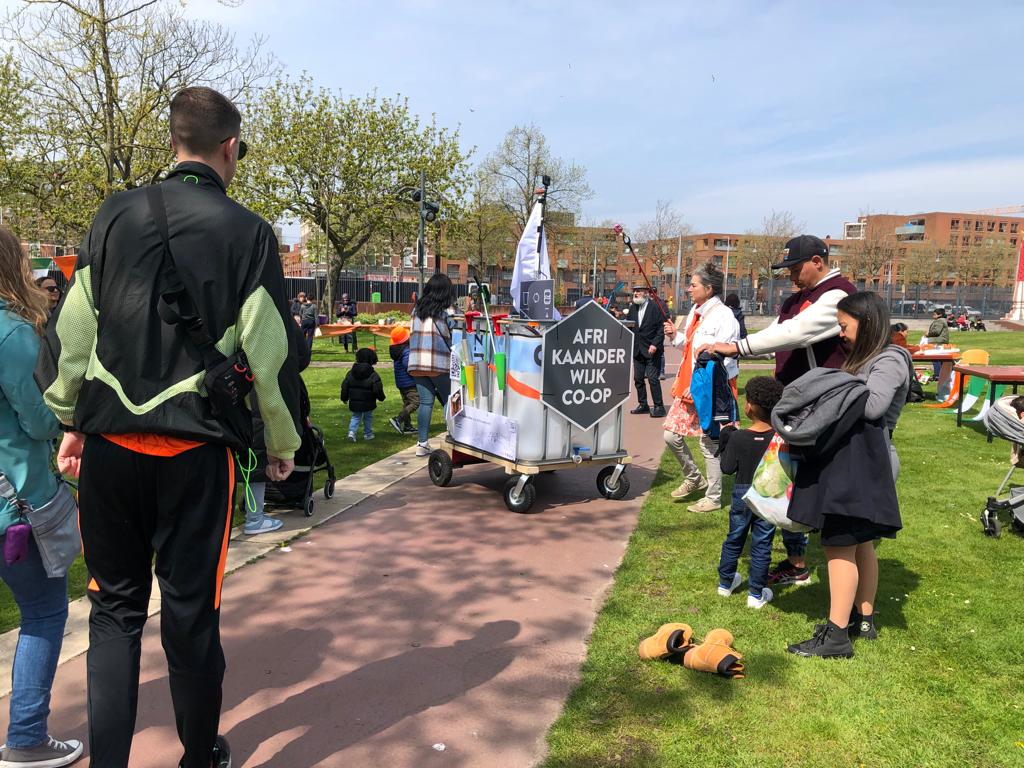Advice for co-creating autonomous Hoodbots

The client
The Cities of Things Lab010 project is a partnership of Cities of Things foundation and Rotterdam University of Applied Sciences. They developed Hoodbot as a co-design and co-prototype toolkit to involve residents from diverse neighbourhoods in Rotterdam to co-create an alternative future, one in which city bots are designed, developed, owned, maintained, and supervised by the citizens themselves.
The Hoodbot (Wijkbot) is a collection of open-source, low-cost tools and methods for co-creating “city bots” that can be designed, developed, owned, maintained and operated by local communities. In a few years, we will likely find ourselves surrounded by autonomous street cleaners, vendors, advertisers, delivery vehicles, and/or security bots.
The challenge
The Cities of Things Lab010 was in need of a technical analysis of all current work in separate Hoodbot projects as input for further development. They were also looking for strategic recommendations for the upcoming release of the Hoodbot technical architecture. To adequately provide smart strategic recommendations, we started out with analysing the Hoodbot concept, while focusing our attention on the existing modules, system architecture, and tech stack. These recommendations would serve as the foundation for upcoming iterations of the autonomous robot.
The approach
We came up with a straight-forward, fast-paced plan that helped us to get off to a flying start. First, we requested access to all documentation, code, and reports and created a stakeholder map, which helped us create a comprehensive analysis.
Then, we performed a technical analysis in which we analysed Hootbot’s current architecture, evaluated its existing modules, and identified gaps and areas for improvement. We also analysed the tech stack in the Hoodbot kit, evaluating compatibility, scalability, and possible upgrades.


The advice
While the Hoodbot (and related technologies) are still in the early stages, with our research we have laid a solid foundation for the Proof of Concept for the Hoodbot. We’ve also set up a layered architecture for the further development of Hoodbot. Providing Hoodbot with modularity, scalability, and separation of concerns, which means that each layer of the architecture is responsible for a single part of the platform, such as the hardware or the communication between Hoodbots. Making sure new features can be introduced rapidly and new users can be connected easily. It fosters abstraction, flexibility, and maintainability by loosely coupling components. This design promotes reusability and interoperability through well-defined interfaces, enabling the development of complex systems that are adaptable, reliable, and easy to manage.
The insights and recommendations from the analysis will guide future actions of the Hoodbot platform, whether that’s further development or directing student teams in creating new research artefacts.
Cities of Things about our collaboration:
“With INFO, we found the right partner to create a solid foundation for future technical developments. This tech review needed a mix of professional skills and a flexible and adaptive mindset. It gave us the confirmation and trust to aim for the next iteration and scaling of the Hoodbot platform.”
– Iskander Smit, Chairman Cities of Things Foundation
Let’s look ahead together
Get in touch and let’s see how we can help you advance.

Hoite Polkamp
Director of Business Development